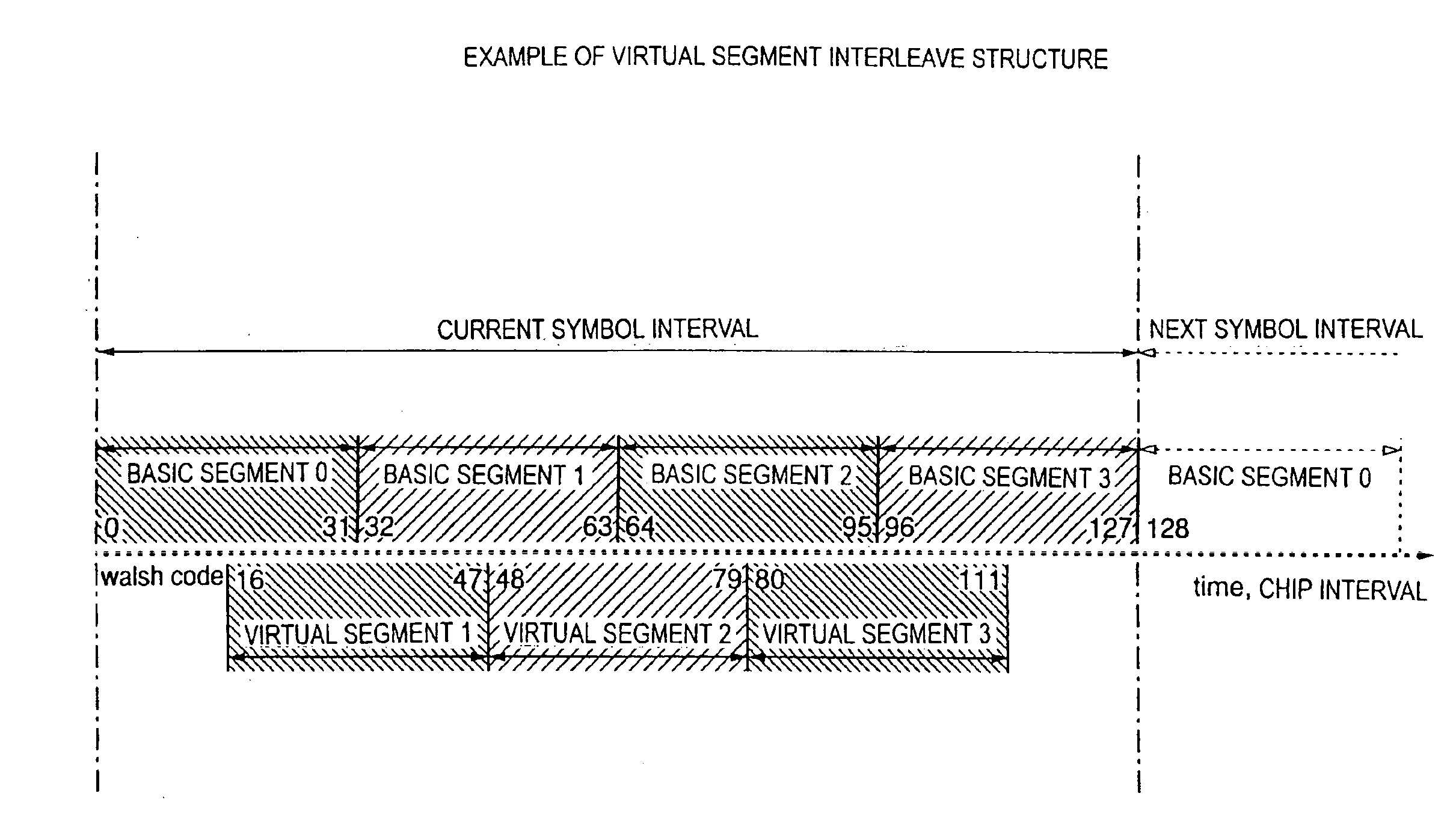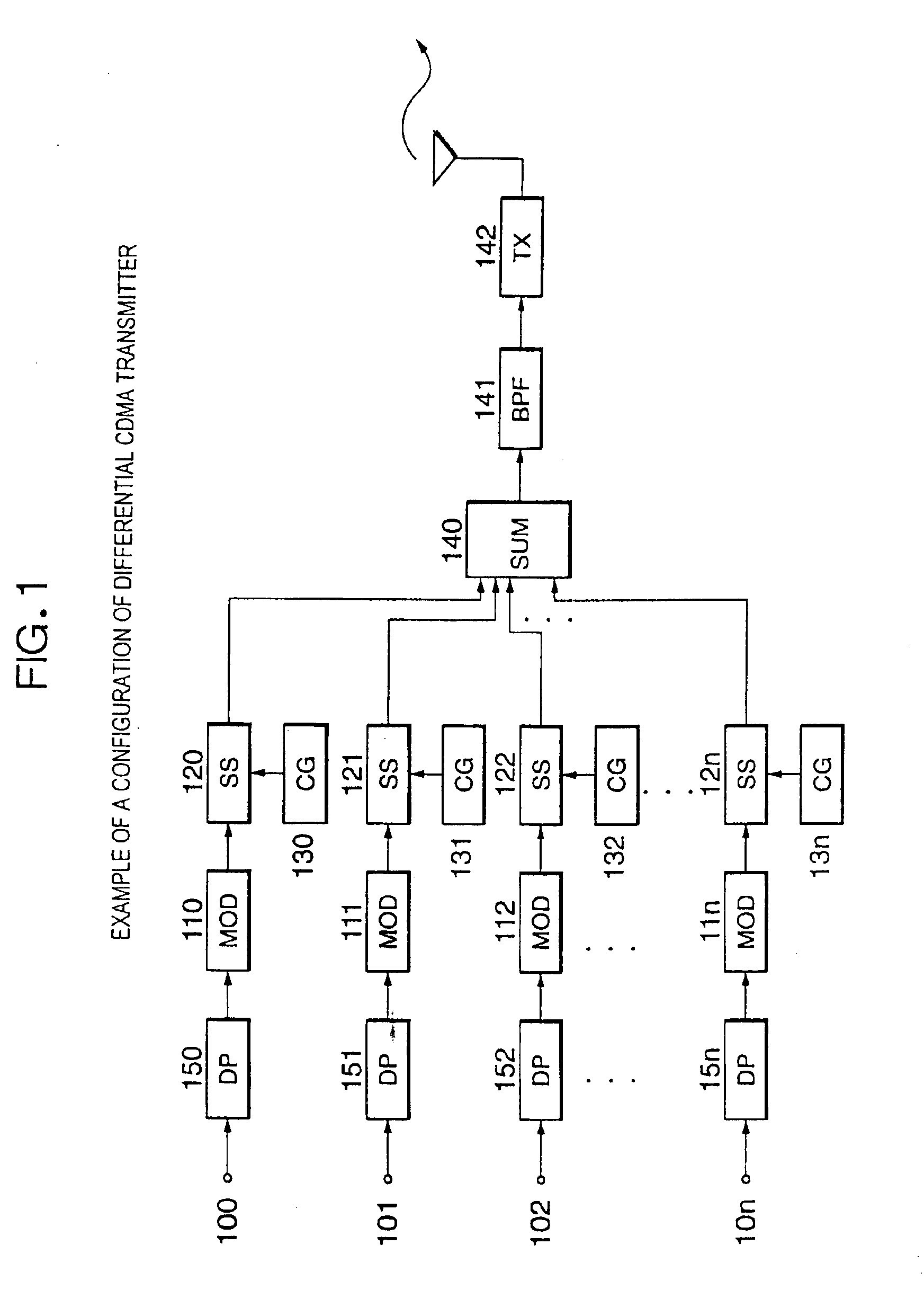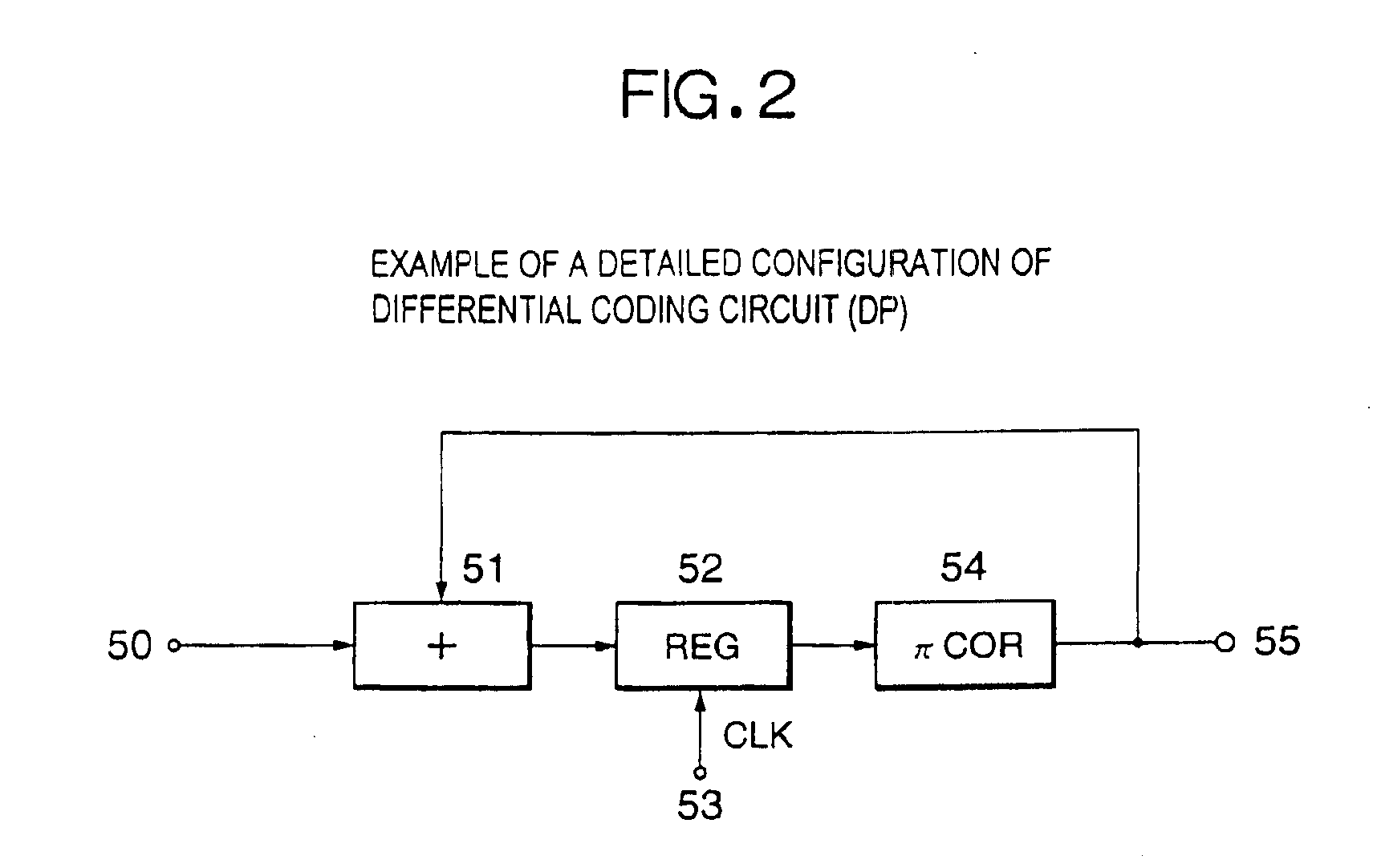Code division multiple access (CDMA) transmission system
a transmission system and code division technology, applied in multiplex communication, radio transmission, electrical equipment, etc., can solve the problems of inability to save gray coding, all bit errors, phase errors generated in detected phase values, etc., to achieve the effect of improving noise immunity and communication quality, facilitating removal of amplitude distortion, and improving communication quality
- Summary
- Abstract
- Description
- Claims
- Application Information
AI Technical Summary
Benefits of technology
Problems solved by technology
Method used
Image
Examples
first embodiment
[0194]As the present invention, is proposed a CDMA transmission system wherein a primary modulated wave obtained by the differential coding phase modulation, in which a phase difference in a symbol interval shows information, is spread by a spread code.
second embodiment
[0195]As the present invention, is proposed a phase continuous CDMA transmission system wherein a primary modulated wave obtained by phase modulation, in which a phase value continuously change, is spread by a spread code sequence.
third embodiment
[0196]As the present invention, is proposed a chip waveform continuous CDMA transmission system wherein a primary modulated wave is spread using a chip waveform that is continuously changed.
PUM
 Login to View More
Login to View More Abstract
Description
Claims
Application Information
 Login to View More
Login to View More - R&D
- Intellectual Property
- Life Sciences
- Materials
- Tech Scout
- Unparalleled Data Quality
- Higher Quality Content
- 60% Fewer Hallucinations
Browse by: Latest US Patents, China's latest patents, Technical Efficacy Thesaurus, Application Domain, Technology Topic, Popular Technical Reports.
© 2025 PatSnap. All rights reserved.Legal|Privacy policy|Modern Slavery Act Transparency Statement|Sitemap|About US| Contact US: help@patsnap.com



